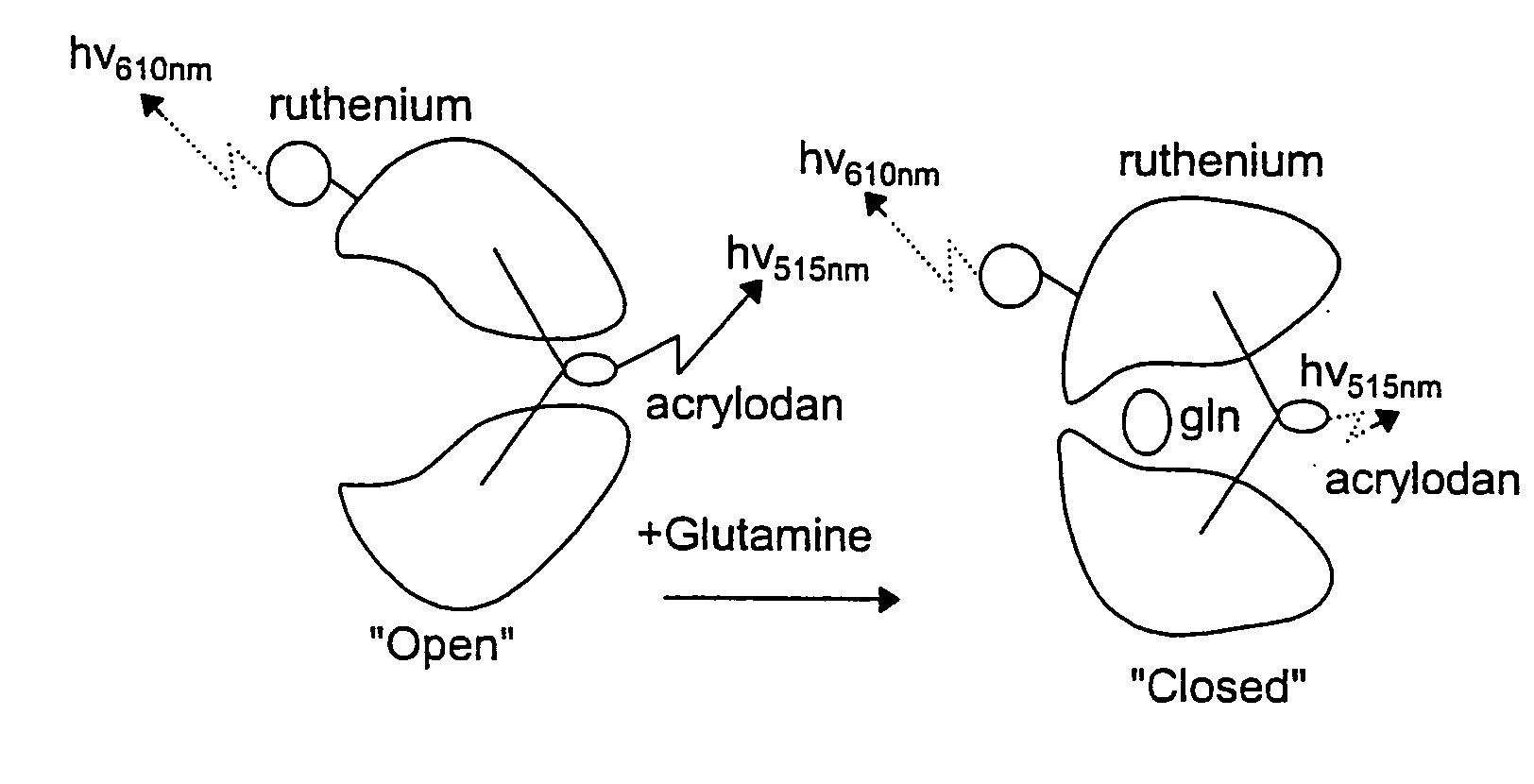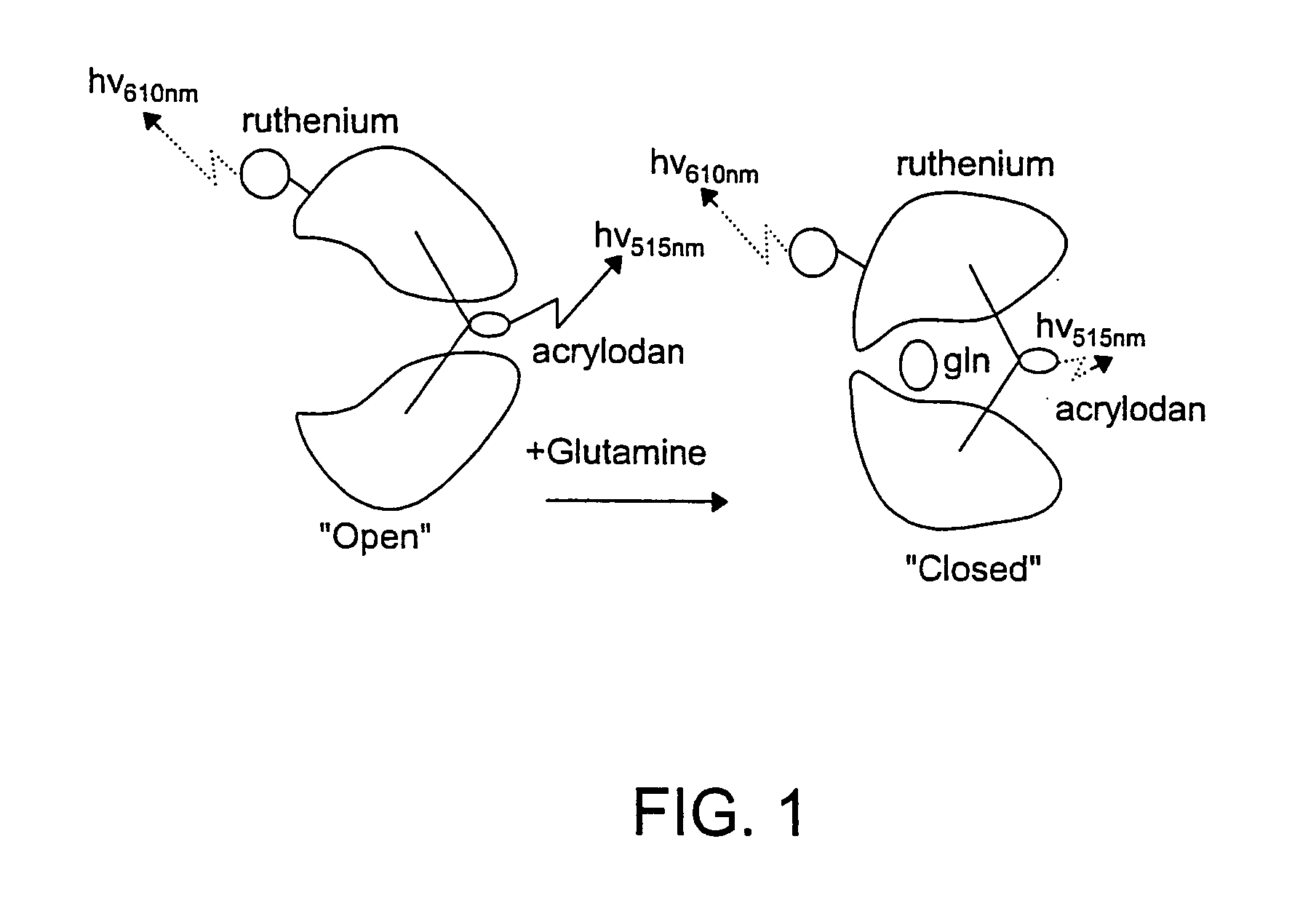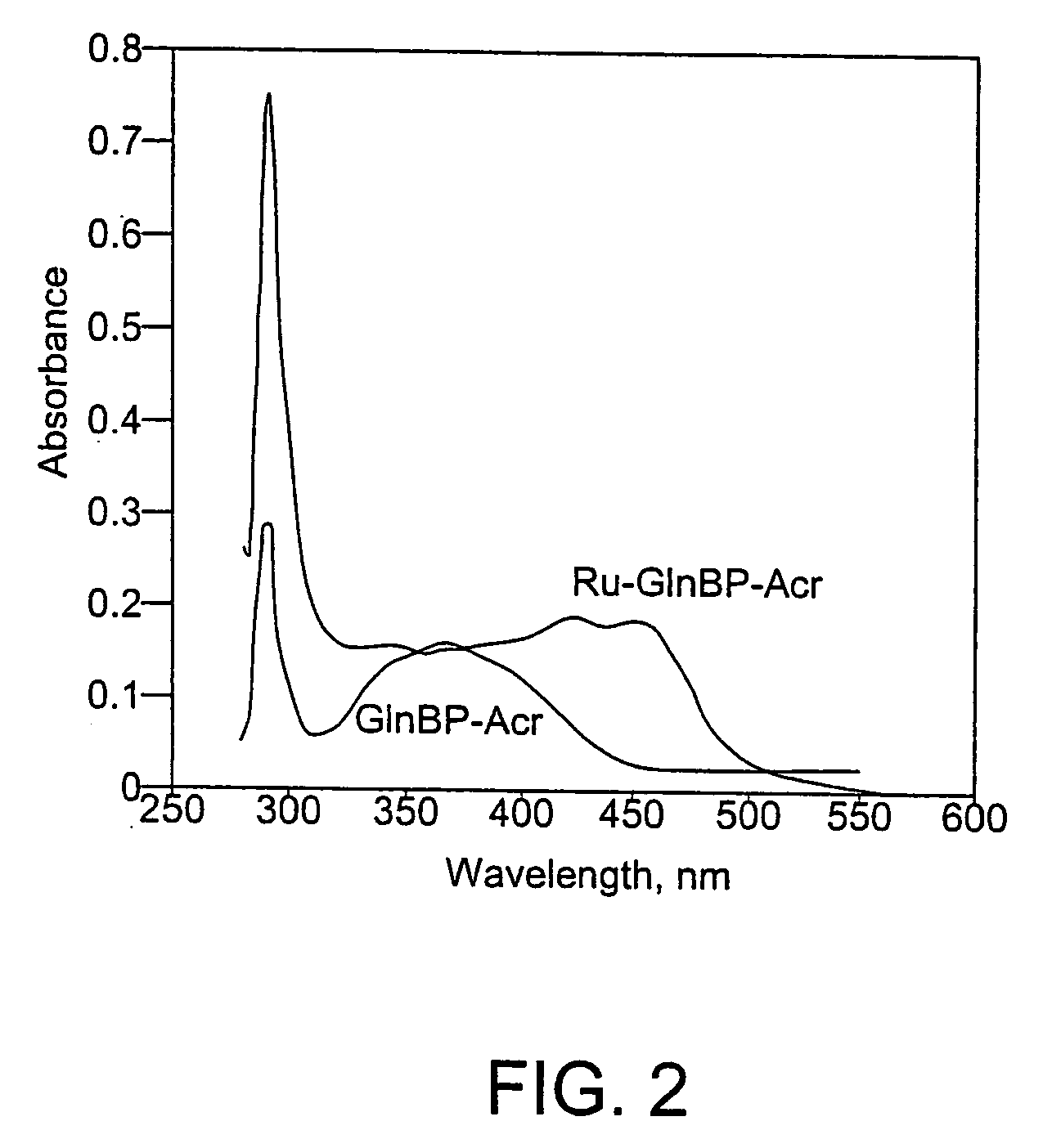Proteins, Sensors, and Methods of Characterizing Analytes Using the Same
a technology of analytes and proteins, applied in the field of proteins, can solve the problems of reducing the yield of cell culture, and requiring expensive instruments both techniques, and severely limiting cell growth and product yield in industrial bioprocess applications
- Summary
- Abstract
- Description
- Claims
- Application Information
AI Technical Summary
Benefits of technology
Problems solved by technology
Method used
Image
Examples
example 1
[0234]GlnBP Expression and Isolation
[0235]A plasmid containing the S179C variant of GlnBP was expressed in E. coli strain HB101. To release the periplasmic GlnBP, cells from 150-ml overnight cultures were first pelleted by spinning for 10 min. at 6000 g and resuspended in 3 ml of deionized water. Chloroform (3 ml) was added to the cells, which were vortexed briefly and incubated for 10 min. at room temperature. Then, 12 ml of 20 mM phosphate buffer, pH 7.5, was added. Samples were vortexed briefly and spun for 20 min. at 6000 g. The supernatant containing the periplasmic proteins was then decanted or pipetted into a clean sterile plastic tube. The amount of S179C GlnBP was estimated to be >80% of the total periplasmic extract after sodium dodecyl sulfate-polyacrylamide gel electrophoresis (SDS-PAGE) and staining with brilliant blue G (Sigma-Aldrich, St. Louis, Mo.). Reaction of the crude extract with 6-acryloyl-2-dimethylamino-naphthalene or acrylodan (Molec...
example 2
Glucose-Binding Protein
[0246]Materials
[0247]6-Acryloyl-2-dimethylaminonaphthalene (acrylodan) and tris(2-carboxyethyl) phosphine (TCEP) were purchased from Molecular Probes (Eugene, Oreg.). Fucose, sucrose, glucose, DEAE Sephadex A-50, N,N-dimethylformamide (DMF), NaCl, KH2PO4, Na2HPO4, NaH2PO4, and MgCl2 were purchased from Sigma-Aldrich. Tryptone and yeast extract were obtained from Becton Dickinson (Sparks, Md.). All chemicals were used without further purification. Slide-A-lyzer dialysis cassettes were purchased from Pierce (Rockford, Ill.). SStI, PstI restriction enzymes were purchased from Invitrogen Life Technologies. The Quick-Change mutagenesis kit was obtained from Stratagene (Cedar Creek, Tex.).
[0248]Construction of the Plasmid
[0249]The plasmid JL01 encoding for the wild-type GBP was used as the template for the construction of the L255C GBP mutant. The single-cysteine mutation at position 255 was accomplished using the Quick-Change mutagenesis kit from Stratagene. The 5′...
examples 3 and 4
[0270]Example 3 involves a glucose-binding protein and Example 4 involves a glutamine-binding protein. These Examples illustrate the signal transduction properties and potential applications of these proteins.
[0271]Materials
[0272]2-(4′-iodoacetamidoanlino)naphthalene-6-sulfonic acid (ANS) and 6-acryloyl(di-menthylamino)naphthalene (acrylodan), tris(2-carbonxyethyl)phosphine (TCEP) were purchased from Molecular Probes (Eugene, Oreg.). Glucose, mannose, galactose, sucrose, fructose, maltose, glutamine, Sephadex G-25, DEAE Sephadex A-50, N,N-dimethylformamide (DMF), chloroform, NaCl, K2HPO4, KH2PO4, Na2HPO4, NaH2PO4, MgSO4 were purchased from Sigma-Aldrich. Tryptone and yeast extract were obtained from Becton Dickinson (Sparks, Md.). Soy peptone was obtained from DIFCO Laboratories Detroit, Mich.). All chemicals were used without further purification. Dialysis membrane tubing was obtained from Spectrum Medical Industries, Inc. (Los Angeles, Calif.). Slide-A-lyzer® dialysis cassettes we...
PUM
| Property | Measurement | Unit |
|---|---|---|
| modulation frequency | aaaaa | aaaaa |
| excitation wavelength | aaaaa | aaaaa |
| emission wavelengths | aaaaa | aaaaa |
Abstract
Description
Claims
Application Information
 Login to View More
Login to View More - R&D
- Intellectual Property
- Life Sciences
- Materials
- Tech Scout
- Unparalleled Data Quality
- Higher Quality Content
- 60% Fewer Hallucinations
Browse by: Latest US Patents, China's latest patents, Technical Efficacy Thesaurus, Application Domain, Technology Topic, Popular Technical Reports.
© 2025 PatSnap. All rights reserved.Legal|Privacy policy|Modern Slavery Act Transparency Statement|Sitemap|About US| Contact US: help@patsnap.com



